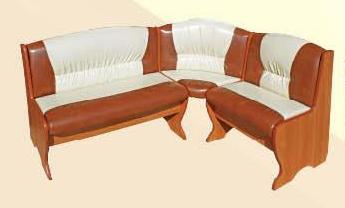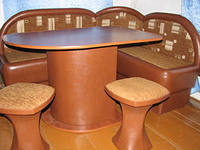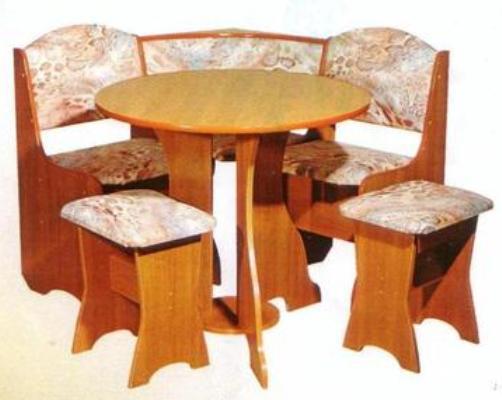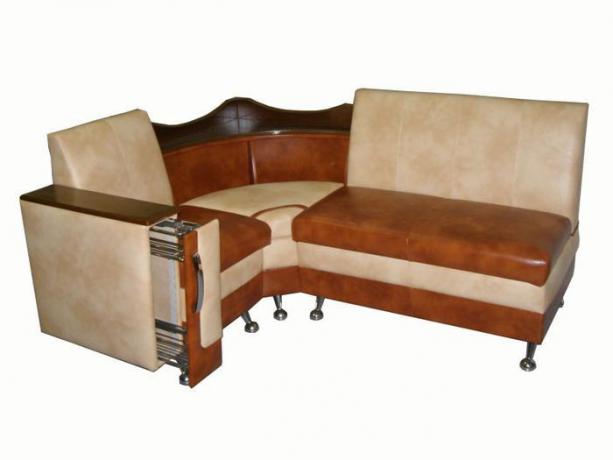Content
-
1 We are ready to congratulate you
- 1.1 Feel like a creator
- 2 Finally
Everyone has known for a long time that any idea can become a reality if you first depict it on paper with all the details, and then, based on this image, make your plan. At the same time, drawings for manufacturing can be easily downloaded from sites, for which you will have to walk along many sources, and, using what you have already seen, your own size and desire, to create something individual. What is called unparalleled.

Everything can be done.
Moreover, this model will be made in one copy and represent what many aspire to - exclusivity. So, we are already preparing you for the fact that the drawings of the kitchen corner with dimensions will allow you to fit the product not just into the corner your kitchen, but also focus on the real-life features of the arrangement of furniture and color solutions.
We are ready to congratulate you

It is sometimes helpful to deviate from standards.
You really were not mistaken in deciding to make a corner according to your own patterns and for your own conditions (see also the article on
kitchen corner). This does not mean at all that the price of this product will go off scale beyond all conceivable and inconceivable limits, or the product itself will be very simple, like an enlarged parcel box, decorated in a folk style.Judge for yourself:
- The standard product has standard dimensions, and no tricks will allow you to change the existing order of things. In this case, you become a hostage to the situation, and you either have to rearrange the furniture, adjusting to a new inhabitant of the kitchen, or, based on specific conditions, take a product with smaller dimensions, which is also not always justified;
- Colors and upholstery materials are not chosen by you, but rather by you. Even with all the variety of fabrics and colors, you have to make concessions either towards sizes, or towards shapes, or towards existing colors. This is certainly not so noticeable if you decide to additionally purchase material and make capes of the color and cut you need, but why overpay;
- There is one more detail that manufacturers of standard furniture will not provide - this is the ability to design and manufacture furniture with compartments for specific kitchen items. If, for example, you have a lot of decor items, then a curbstone in a corner space, which may even be higher than the general ensemble of the structure, will calmly accept them. And seasonal covers, keys for twists and everything that can be combined under one concept of conservation will fit perfectly into one of the product compartments, and will not come to hand all year round. The main thing with the shelves is not to overdo it.
- Sometimes home craftsmen design a kitchen corner in such a way that even a sleeping place is provided in it, but given the small size of kitchens, lengthening of berths occurs due to attached or special folding elements, about which the manufacturers of stationary furniture and not guess.

The corner can be anything.
Feel like a creator

Connecting element.
Please read this section carefully before you transform flat scaled-down pieces of paper into something three-dimensional and entirely yours. This instruction will allow you to avoid those mistakes that it is better not to fix neither before, nor during, nor after.
Therefore, before assembling, you need to go through a three-step path, which will allow you to avoid unnecessary mistakes. So:
- The drawing of the kitchen corner should depict a physiological model in all respects, as it is now fashionable to say ergonomic;
- Materials and tools must be checked and prepared;
- There are technological processes that require great precision, the beauty and functionality of the entire product depends on their correct execution. Therefore, at this stage, we recommend that you determine what you will do with your own hands and what you will entrust to the masters and professional equipment.
And now, too, but in more detail:
- Physiology and product. It is no secret that a person sitting down on a chair, armchair or sofa tries to lean back and move his legs a little under the seat. This is quite physiological, and if a person's back and pelvis are supported by soft supports, then in this state he perfectly relaxes, rests and recovers. The kitchen and dining table are exactly what they should be, so the developers make the backs upholstered kitchen furniture at an angle, and leave a small space for the shins under the bench.
Note! In many models, the seat width is greater than the width of the base of the leg, and if they coincide (this is sometimes done for better stability of the product), then the lower front plate is located at an angle in the anteroposterior direction, specifically for the shins sitting. The only product where this advice can be neglected is a sofa with a sleeping place.
- By designing the corner yourself, you can beautifully choose the height of the seat of the product for yourself (see also the article on do-it-yourself kitchen corner). The criterion for determining will be a sitting position of a person in which the feet of both legs are on the floor, and the angle between the thighs and shins is 90 degrees. In this case, the seat height is correctly determined.
- Back height. Here you can rely on both physiological characteristics and aesthetics. We have already said that the back of the product should be at an angle and support the back of the seated person, but the height of the entire ensemble should be slightly higher than the windowsill (this is already an aesthetic component) 5 cm is quite that's enough.
Advice! Each corner, by and large, consists of three parts, two sofas and a connecting piece. We recommend making the entire ensemble modular, that is, each element separately.
Firstly, it is practical, and secondly, it is not a fact that you do not want to change the angle in which this product will be located, and thirdly, it is not a fact that you will not want to change something in the corners themselves, for example, increase the product, or introduce an additional element.

And this one is generally made a monolith.
- On materials and tools. Materials are listed by us based on a very simple calculation, a product that you want to design for more than one year, so only the best materials:
- If you plan to use a wooden bar in the frame of the product, it should only be dry, a wet bar is a damaged product;
- MDF for end products and backs is, of course, more expensive than chipboard and more expensive than laminated chipboard, but you remember the beginning of the paragraph, the product is not disposable and not one seasonal;
- Seats - polyurethane foam, foam rubber is yesterday, and a product that will require replacement after a not very long period of time;
- You can choose the upholstery yourself. It can be leather, and synthetic fiber (which must be given its due well-proven) and leatherette. The first and second are preferred.
We will not list the tool on the basis of two points:
- First, there should be a minimum amount;
- Second, it is only necessary to use it to assemble the product, and not cut the material.
- What to whom. Without going into lengthy considerations and relying on experience, we recommend that you carry out all work on cutting and sawing the material on professional equipment. The explanation is very simple, in the design and assembly of furniture, every millimeter matters.

Nobody will demand such difficulties from you.
Finally
The purpose of this material is not to load you with numbers and thus limit your imagination. And thanks to photo and video materials, give the basic principles of making soft corners.


